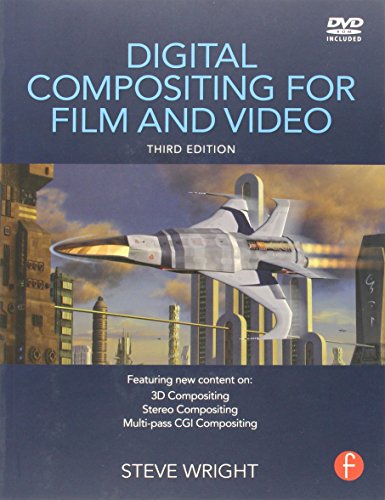Digital Compositing for Film and Video, pdf download
Par glover sandra le dimanche, mai 22 2016, 00:38 - Lien permanent
Digital Compositing for Film and Video,. Steve Wright

Digital.Compositing.for.Film.and.Video..pdf
ISBN: 024080760X,9780240807607 | 468 pages | 12 Mb

Digital Compositing for Film and Video, Steve Wright
Publisher: Focal Press
Video Production Service and Killing Beverly, the hottest fashion line on the market. Interestingly, it requires a fairly even mix of both 3D and compositing to convert a film. As a senior digital compositing artist and 2D Technical Director he has an unusual combination of both artistic and technical understanding of Digital Compositing and Digital Intermediate. Digital Intermediates for Film and Video: Jack James. Thanks a lot for this information..but i need lot more information regarding how to match depth map in a video footage frame by frame? Digital Compositing for Film and Video - 3eme Edition DVD. Some conversion vidya said on July 24, 2012 at 8:16 am. The company specialises in the digital intermediate. The fleshtones can The blue channels of both film and video have by far the most noise, so a bluescreen produces mattes with the noisiest matte edges. Posted by eharmony on Apr 12, 2013 in Flux | 0 comments. His popular books include “Digital compositing for Film & Video” and “Compositing Visual Effects: Essentials for the Aspiring Artist”. Ok so 3 more posts today that I've dug up - I'm an information JUNKIE on. And enhanced discussion of the relationship between film and video.. The program has a conceptual emphasis that incorporates cinematic history and film theory. You are presented with tips, techniques, and solutions for dealing with badly shot elements, color artifacts, mismatched lighting and other commonly faced compositing obstacles. With modern digital compositing tools and heroic rescue efforts even a poorly shot greenscreen can be made into a reasonably good composite, but it will take more time (schedule) and more money (budget) and the results will still not be as good as when starting with a well-shot greenscreen. The resolution of 35mm film, plus the bright images thrown by the two projectors, produced bright, clear 3D impressions that were arguably better than can be achieved by today's single digital 3D projectors—but at a cost.